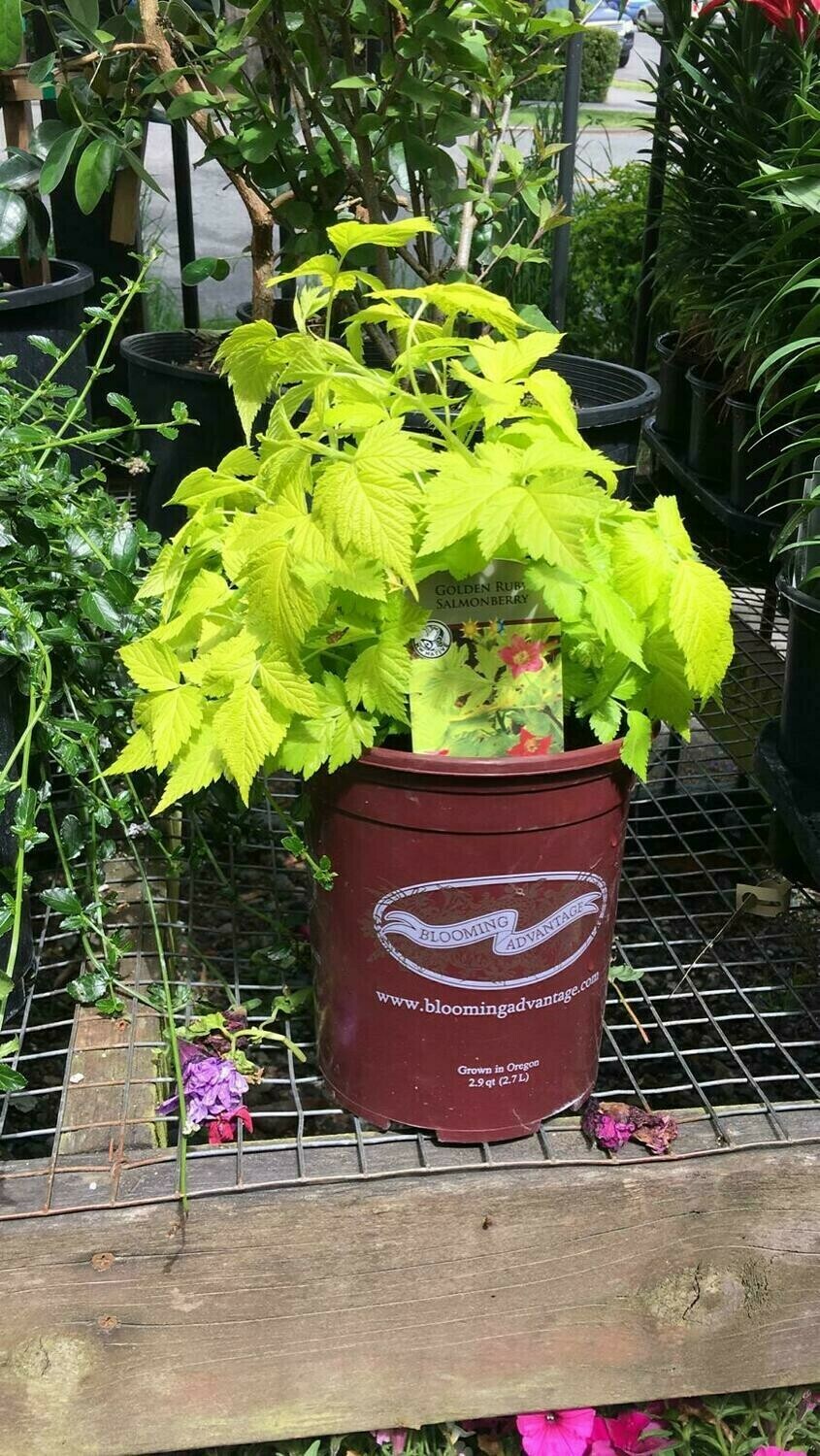
Salmonberry, Rubus spectabilis 'Golden Ruby' 1Gal
Rubus spectabilis, commonly called salmonberry, is a rhizomatous, rambling, deciduous perennial shrub native to the northwestern coast of North America, from Alaska south to northern California. It has upright to arching, sparsely branching stems (up to 10' tall), and will spread by underground runners to form a large, relatively dense thicket. Mature canes are usually not thorny, and typically have brown, shedding bark. The compound leaves are made up of three leaflets with toothed margins. The bright pink to red pendulous flowers emerge in spring and are held singly or occasionally in clusters from the leaf axils. Aggregate fruits resembling raspberries or blackberries mature from golden orange to deep purple-red. This plant offers many benefits to wildlife. Hummingbirds and other pollinators visit the flowers, the fruits are a source of food for many bird and mammal species, and a salmonberry thicket provides cover and protection for small animals.
